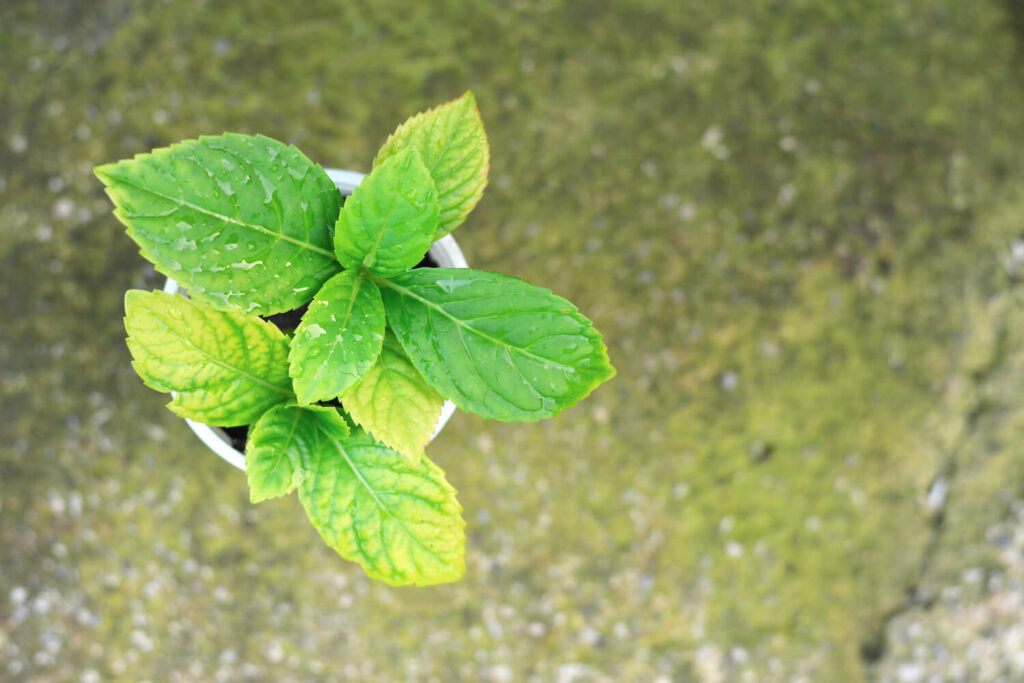The Only Guide for Hydrangea Leaves Turning Yellow
The Only Guide for Hydrangea Leaves Turning Yellow
Blog Article
The Basic Principles Of Hydrangea Leaves Turning Yellow
Table of ContentsHydrangea Leaves Turning Yellow for BeginnersIndicators on Hydrangea Leaves Turning Yellow You Need To KnowAn Unbiased View of Hydrangea Leaves Turning YellowLittle Known Questions About Hydrangea Leaves Turning Yellow.
Hydrangea plants are understood for their gorgeous blossoms, yet in some cases their fallen leaves can transform yellow. This is usually an indication that something is wrong and the plant requires your aid. There are numerous feasible root causes of yellow leaves on Hydrangeas, and thankfully the majority of them are very easy to fix. Below we'll cover one of the most typical root causes of Hydrangea leaves transforming yellow and exactly how to repair them.Hydrangea leaves turning yellow can be a cause for concern. Hydrangea leaves commonly turn yellow when the plant is overwatered.
When the roots of a plant are immersed in water for extended periods, they begin to asphyxiate and rot. This process cuts off the roots' oxygen supply, triggering the fallen leaves to transform yellow and eventually die. Overwatering can likewise lead to various other problems such as fallen leave decrease, origin damage, and fungal development.
If you believe your Hydrangea is overwatered, the best remedy is to let the dirt dry entirely prior to sprinkling again. It's also a great concept to check the drain of your pot or garden bed and see to it that water is not merging around the plant's roots. Hydrangea plants require well-drained soil to grow.
See This Report about Hydrangea Leaves Turning Yellow
You must additionally ensure that you are not watering your Hydrangea frequently. Watering when a week should be enough, and more frequently if the weather is warm and dry. Hydrangea leaves can also transform yellow if the plant is not getting enough water. This occurs when the plant does not obtain enough water, and the dirt starts to dry.

This is known as "plant food burn," It occurs when the plant's roots are subjected to excessive plant food. The roots can not absorb all of the nutrients and come to be harmed. This damages triggers the see this leaves to turn yellow and eventually die. Other signs of plant food burn consist of brownish or yellow fallen leaves, wilting, and stunted growth.
This will certainly assist remove any excess plant food from the origins of the plant. It's likewise an excellent idea to lower the amount of fertilizer you are using. Fertilizing when a month during the expanding season ought to suffice. If you are utilizing chemical fertilizer, it's best to use one that is watered down and applied according to the supplier's guidelines.
Some Ideas on Hydrangea Leaves Turning Yellow You Need To Know

If your Hydrangea is infested with bugs, treating the plant with neem or horticultural oil is the very best solution. It's additionally excellent to eliminate any type of affected leaves from the plant. You can do this by hand or with a pair of trimming shears. It's also a great concept to inspect the plant regularly for pests and eliminate them as quickly as you see them.
Hydrangea leaves can likewise turn yellow if the temperature emphasizes the plant. The leaves of the plant will certainly turn yellow and begin to drop off.
If the temperature emphasizes your Hydrangea, you require to relocate the plant to an area where it will be secured from the extreme chilly or warmth. You can likewise attempt to offer the plant with some partial shade if revealed to direct sunshine. You can likewise try adding mulch around the plant base to assist regulate the temperature.
Getting My Hydrangea Leaves Turning Yellow To Work
When the plant's origins are immersed in water for also long, they begin to rot. One of the most common origin rot signs is yellowing leaves, as the fungus stops the origins from absorbing nutrients from the dirt.
Various other signs of origin rot include stunted growth, page wilting, and fallen leave decline. Inspect the origins of your Hydrangea if it has origin rot. If they are black or brown, after that they are probably rotten. If some healthy origins are left, you can try to save the plant by replanting it in a new pot with fresh soil.
Water the plant meticulously, ensuring not to overwater it. If your Hydrangea is greatly impacted by origin rot, starting with a brand-new plant is best. Natural causes can additionally create yellow hydrangea leaves. One of the most common reason is the plant's age. As Hydrangeas age, their leaves will slowly turn yellow and brown before view website falling off the plant.
You can aid the plant by ensuring it is obtaining enough water and nutrients. You can also mulch around the plant base to help it preserve moisture. There are several reasons hydrangea leaves might transform yellow and diminish. Hydrangea Leaves Turning Yellow. One opportunity is that the plant is not obtaining sufficient water.
Report this page